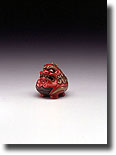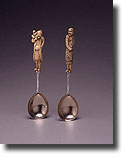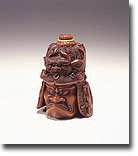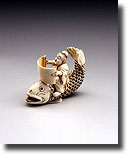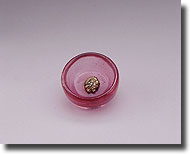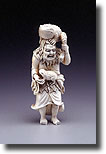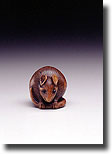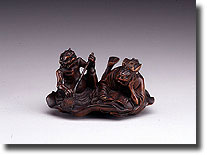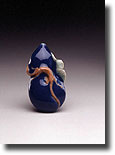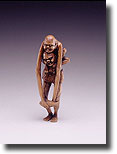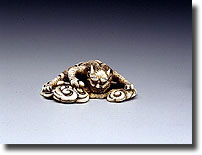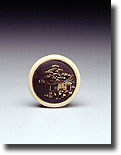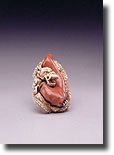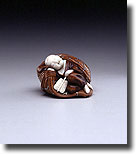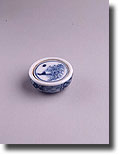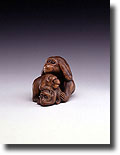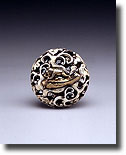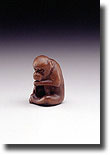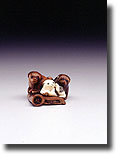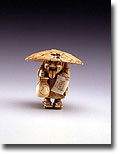|
Japanese artists cleverly invented the miniature sculptures known as netsuke to serve a very practical function. Traditional Japanese garments - robes called kosode and kimono - had no pockets. Men who wore them needed a place to keep personal belongings such as pipes, tobacco, money, seals, or medicines. The elegant solution was to place such objects in containers (called sagemono) hung by cords from the robes' sash. The containers might take the form of a pouch or a small woven basket, but the most popular were beautifully crafted boxes (inro), which were held shut by ojime, sliding beads on cords. Whatever the form of the container, the fastener that secured its cord at the top of the sash was a carved, button-like toggle called a netsuke. Such objects, often of great artistic merit, have a long history reflecting important aspects of Japanese life. Carolyn
M. Putney, Associate Curator of Asian Art |
click on images for large images with details
© Toledo Museum; photos by Tim Thayer

